Seeing the world through someone else’s eyes can be enlightening, but imagine seeing the world through a different species’ eyes. Animals often perceive more than we do, capturing more colors, detecting subtle movements, or even seeing in the dark. Intrigued? Let’s dive into the world of creatures with extraordinary vision and discover how their perspectives differ from ours. You might find it fascinating how these animals experience the world in ways we can only imagine.
1. Mantis Shrimp
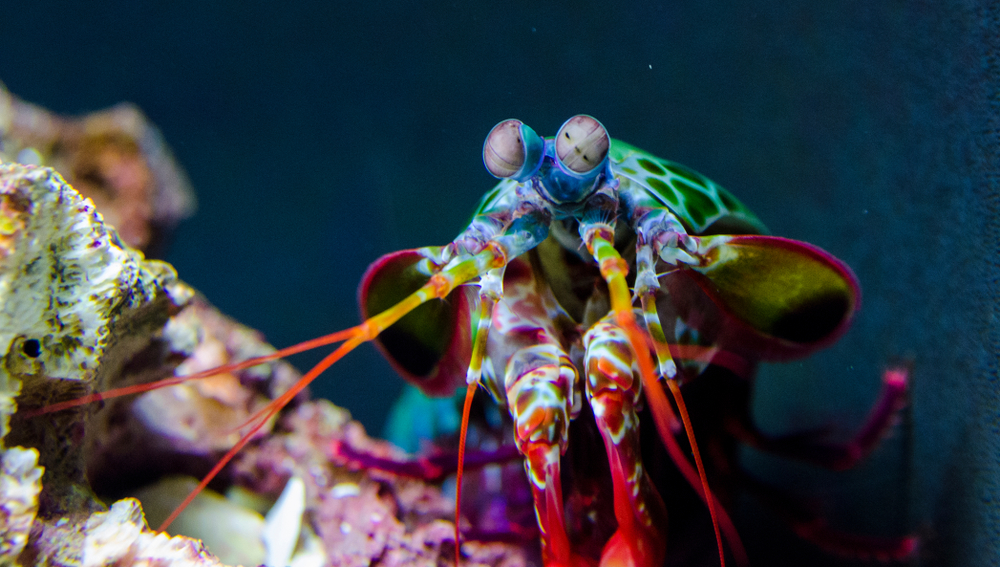
Imagine seeing a world bursting with colors we can’t even name. The mantis shrimp has up to 16 types of color-receptive cones in its eyes, compared to our mere three. This means while we see a vibrant rainbow, the mantis shrimp sees an explosion of colors. Dr. Justin Marshall, a scientist at the University of Queensland, has studied these crustaceans and notes that their vision is not just about seeing more colors but processing light differently. It’s like having an ultra-HD TV installed in your head.
But the mantis shrimp doesn’t stop at just colors. Its eyes can also move independently and detect polarized light, which is invisible to humans. This ability helps them in spotting prey and navigating their coral reef homes. Additionally, their eyes are on stalks, allowing for a wide range of motion and vision. So next time you see a mantis shrimp, remember, it’s not just their claws that are impressive.
2. Cats
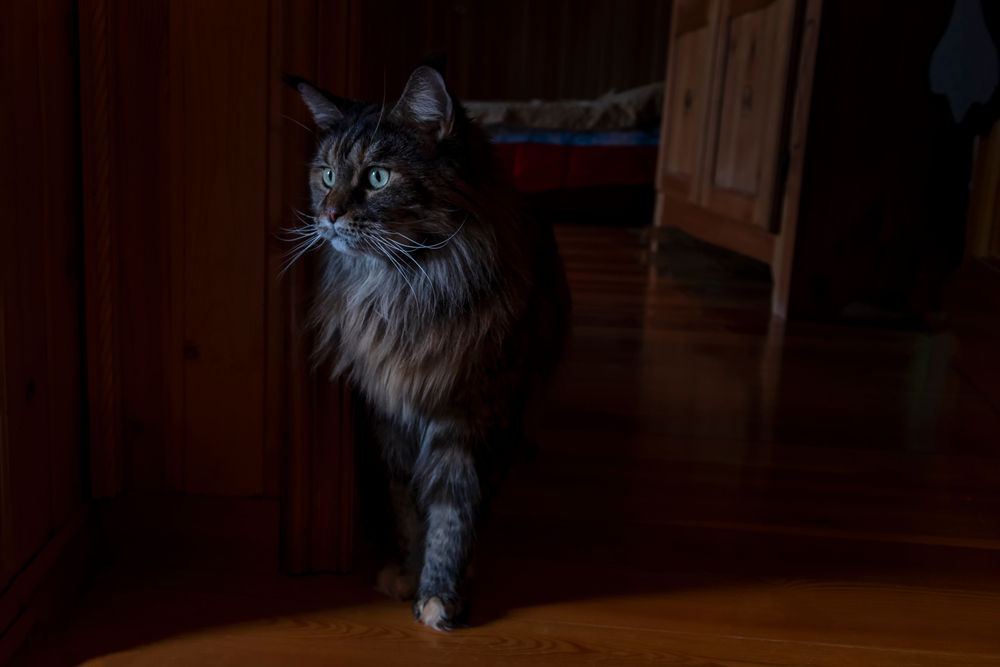
You might have noticed how well cats navigate in the dark. Cats have a layer of cells behind their retinas called the tapetum lucidum, which reflects light back through the retina. This enhances their night vision and gives them that eerie, glowing-eye look. They can see using about one-sixth the amount of light that people need. It’s a bit like having built-in night-vision goggles.
Cats also have more rod cells, which are responsible for detecting light and motion, making them excellent night-time hunters. However, this comes at a cost; they don’t see colors as vividly as humans do. Their world is primarily seen in shades of blue and green, with reds appearing more muted. This trade-off is worth it for them since it helps them survive in low-light conditions. So, the next time your cat stealthily moves in the dark, remember it’s not magic, just their amazing eyes.
3. Bees
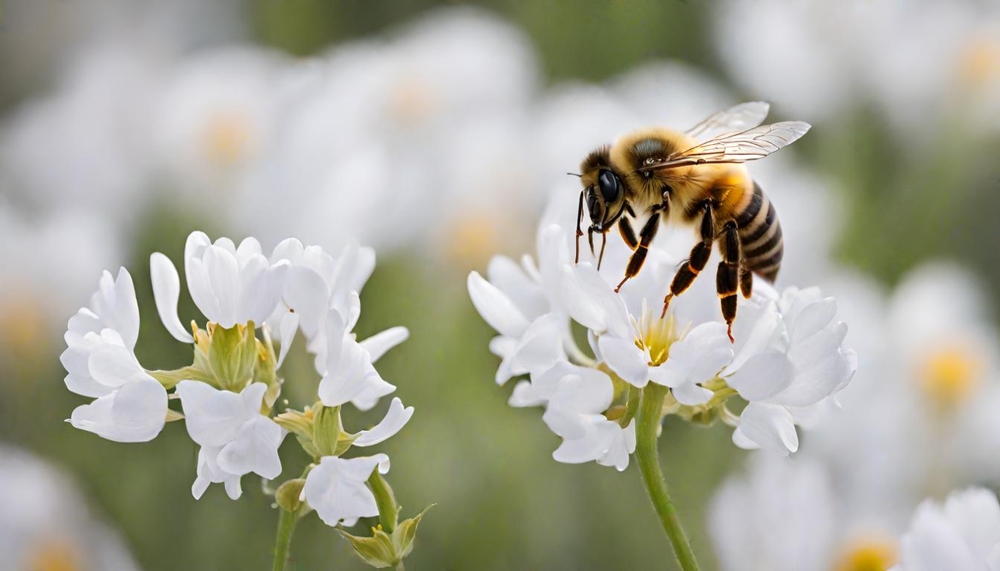
Bees are buzzing with a unique way of seeing the world. They can see ultraviolet light, which is invisible to humans. This helps them detect patterns on flowers that guide them to nectar, making them efficient pollinators. According to Adrian Dyer, a vision scientist from RMIT University, understanding bee vision has even helped us learn more about how to develop better camera technology. It’s like having the ability to see secret guiding signs in the environment.
Interestingly, bees can’t see the color red but can distinguish colors in the blue-green spectrum. This is because their eyes are more sensitive to shorter wavelengths of light. When you see a garden full of flowers, bees see a vibrant UV map leading them to their next meal. They even use the position of the sun and polarized light to navigate, which is pretty impressive for such a tiny creature. Next time you watch a bee buzzing around, remember it’s following a hidden roadmap you can’t see.
4. Snakes
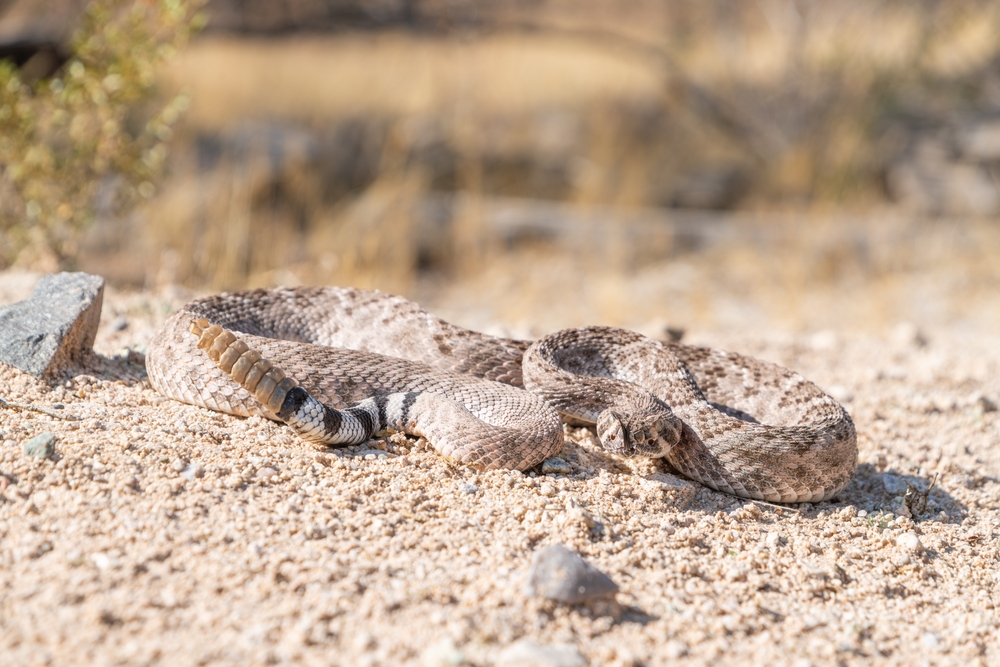
Snakes have an incredible ability that might make your skin crawl. Many species can detect infrared radiation, which allows them to ‘see’ heat. This is especially useful for hunting warm-blooded prey in the dark. It’s like having thermal imaging built right into their heads. This ability is thanks to pit organs located between their eyes and nostrils.
This heat-sensing capability helps them accurately target warm-blooded prey even in total darkness. While their actual sight isn’t great, these infrared sensors give them a unique advantage. It’s not a visual sense in the way we understand sight, but it works similarly by creating a thermal map of the surroundings. So, while you might be trying to hide from a snake, remember, it can sense your body heat.
5. Butterflies

Butterflies might seem delicate and fragile, but they possess some remarkable vision capabilities. They can see ultraviolet light and have a wider spectrum of color vision than humans. Butterflies have up to six different photoreceptor types, which help them detect a variety of colors and patterns on flowers. This capability is particularly fascinating when studying their mating and feeding behaviors, as noted by Dr. Adriana Briscoe from the University of California, Irvine, whose research highlights how these vibrant creatures use their visual prowess. Their vivid world is essential for survival, helping them find food and mates.
Interestingly, the patterns that butterflies see on flowers and each other are often invisible to us. These patterns can guide them to nectar and signal potential mates. Each species of butterfly might see the world slightly differently, depending on its specific needs. They even use their vision to navigate long migratory routes. So, while they flutter around seemingly aimlessly, they’re actually following a well-mapped visual guide.
6. Sharks
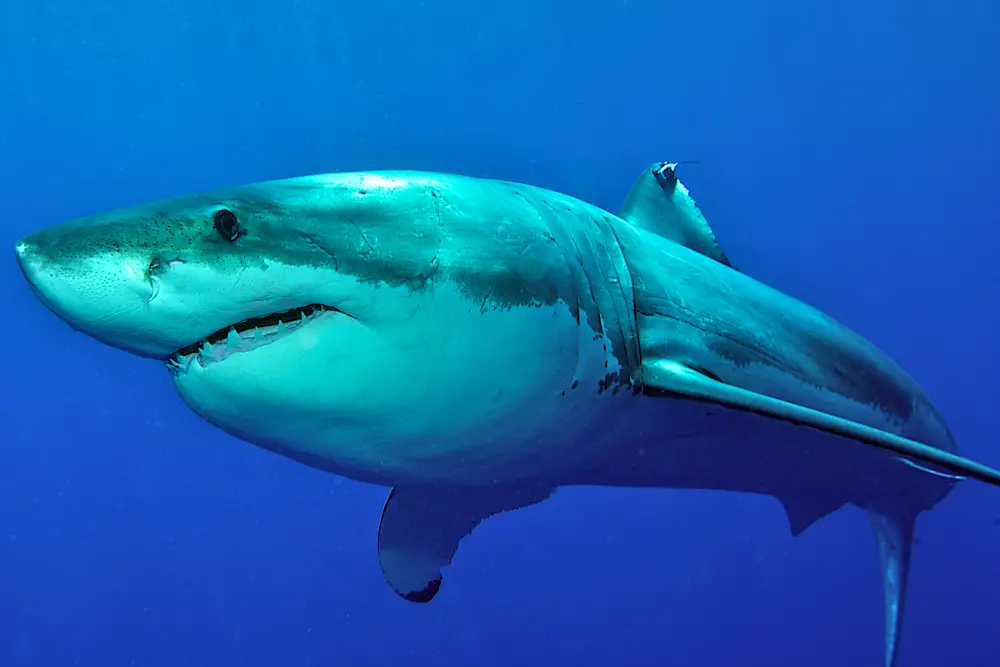
You might think of sharks as purely reliant on their sense of smell or hearing, but their vision is pretty impressive too. Sharks see well in dim light, thanks to the tapetum lucidum, much like cats. This reflective layer of cells enhances their night vision, which is crucial when hunting in the dark ocean depths. They are more sensitive to motion and contrast than color, which helps them detect prey easily. In murky waters, this ability can mean the difference between a meal and going hungry.
Sharks also have a wide field of view, enabling them to spot potential prey or threats from different angles. However, they have a slight blind spot right in front of their snouts. Despite this, sharks are adept at quickly assessing their surroundings. Their eyes can adjust between light and darkness faster than most animals, allowing for effective hunting at varying ocean depths. Next time you think of a shark, remember its keen vision plays a huge role in its survival.
7. Chameleons
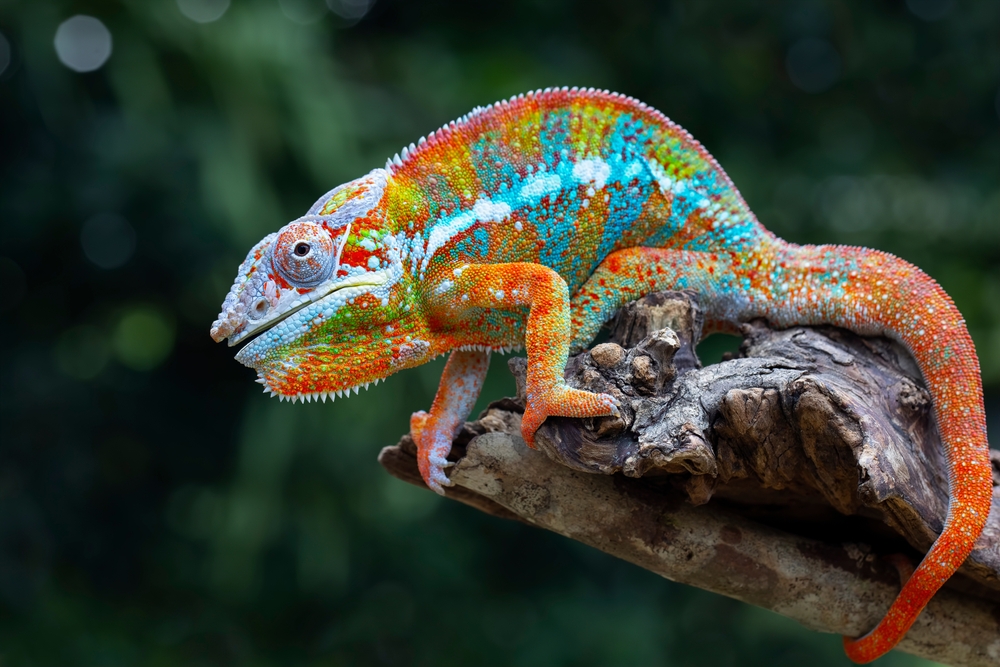
Chameleons are well-known for their color-changing ability, but their vision is equally extraordinary. They can see in both visible and ultraviolet light, giving them a broader spectrum of colors to perceive. Their eyes can move independently, offering a panoramic view of their surroundings. According to Dr. Martin Stevens from the University of Exeter, this unique vision helps them spot predators and prey with remarkable efficiency. It’s like having two cameras recording different angles simultaneously.
This ability to move eyes independently means a chameleon can focus on two different objects at the same time. When they lock onto prey, their stereoscopic vision allows them to gauge distance accurately. This is vital for their hunting technique, which involves a quick, precise catch using their long, sticky tongues. Their eye structure and movements are so advanced that it seems chameleons are living on a different visual plane altogether. So, when you see a chameleon, remember, it’s not just colorful but also a master of complex vision.
8. Eagles
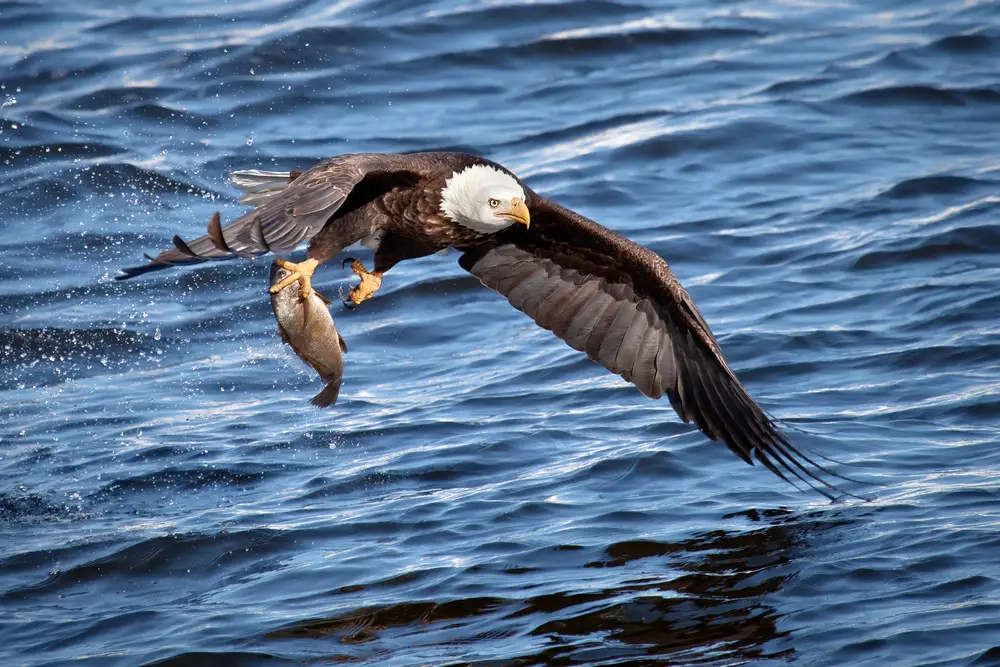
Eagles are often synonymous with keen eyesight, and for good reason. They have a vision that is four to five times sharper than a human’s. This incredible eyesight allows them to spot prey from miles away while soaring high in the sky. Their eyes are equipped with a high number of cones, which are the cells responsible for detecting light. This abundance of cones enables them to see fine details and perceive colors vividly.
Apart from their sharp vision, eagles also have a wide field of view. Their eyes are positioned on the sides of their heads, allowing them to see a broad area without having to turn their heads much. Eagles can also focus on objects at various distances simultaneously, thanks to a special muscle that adjusts the curvature of their lenses. This makes them formidable hunters, capable of locking onto and pursuing prey with precision. So, the next time you admire an eagle soaring, remember that its eyes are its greatest asset.
9. Owls

Owls are the night watchmen of the animal kingdom, with vision designed for low-light conditions. Their large eyes have a lot of rod cells, which are perfect for detecting light and movement in the dark. While their eyes can’t move in their sockets, their flexible necks allow them to rotate their heads up to 270 degrees. This compensates for their fixed eye position, allowing them to have a wide field of vision. It’s like having a built-in night-vision helmet.
Owls also have binocular vision, which means both eyes can focus on a single object, providing them with depth perception crucial for hunting. Unlike us, they see a grayscale world at night, which is more sensitive to changes in light intensity. During the day, however, their vision is limited compared to other birds. But at night, they reign supreme, making them stealthy and successful hunters. So, if you ever hear an owl hooting at night, know that it’s scanning the darkness with precision.
10. Horses

Horses have a visual perspective that might surprise you. They have the largest eyes of any land mammal, which gives them keen peripheral vision important for spotting predators. Positioned on the sides of their heads, their eyes provide a nearly 360-degree field of vision. This wide range is crucial for detecting threats from almost any angle. However, horses do have a small blind spot directly in front of them and right behind their tails.
Their visual acuity isn’t just about range; horses also see well in dim light, helpful for dawn and dusk activity. They perceive motion better than fine details, which is why they might spook easily at sudden movements. Horses see a limited color spectrum, mostly blues and greens, while reds appear more muted. This doesn’t hinder them much, as their vision is geared toward survival rather than detail. So, when you watch a horse gaze into the distance, it’s likely scanning for something you might not even notice.
11. Frogs
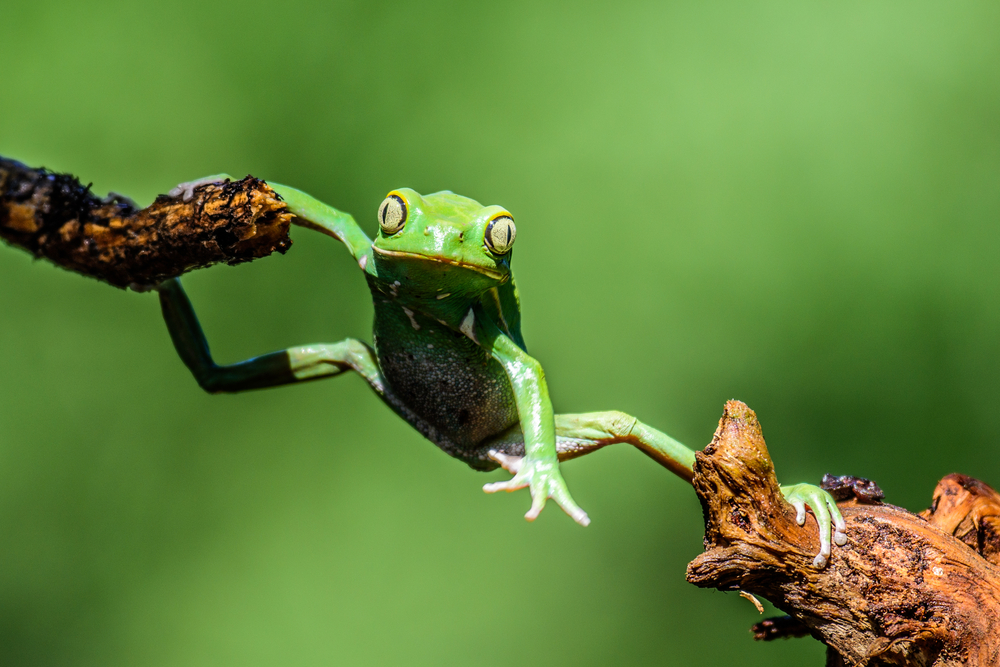
Frogs have a unique way of seeing the world that complements their amphibious lifestyle. Their eyes are located on the top of their heads, allowing them to see above water while the rest of their bodies remain submerged. This positioning helps them spot predators and prey in both water and on land. Frogs’ eyes are adapted to detect movement with high sensitivity, essential for catching fast-moving insects. It’s like having a motion detector for survival.
While they are excellent at detecting movement, frogs see a less colorful world than we do. Their vision is tuned more towards shades of green and blue, which suits their aquatic environments. Frogs have an extra type of photoreceptor that helps them see in low light, useful for their crepuscular and nocturnal lifestyles. Another intriguing aspect is that their eyes assist in swallowing; when a frog blinks, its eyes move down to help push food down its throat. So, when you see a frog’s bulging eyes, know there’s more to them than meets the eye.
12. Dragonflies

Dragonflies are the acrobats of the insect world, supported by their incredible vision. They have compound eyes made up of thousands of tiny lenses, giving them a nearly 360-degree view. This all-around vision is crucial for detecting prey and avoiding predators mid-flight. Dragonflies can see a wide range of colors, including ultraviolet light, which helps them find mates and food. It’s like having panoramic, high-resolution cameras on each side of their heads.
Their vision is particularly adept at detecting movement, which is vital for catching other insects in the air. Dragonflies can see at different speeds, a trait known as flicker fusion rate, meaning they can process visual updates faster than most other creatures. This rapid processing is essential for high-speed pursuits and agile maneuvers. While their vision is highly specialized, it doesn’t allow them to see fine detail. So next time you watch a dragonfly zipping through the air, remember it’s not just speed but also its extraordinary eyes that make it a skilled hunter.
13. Tarsiers
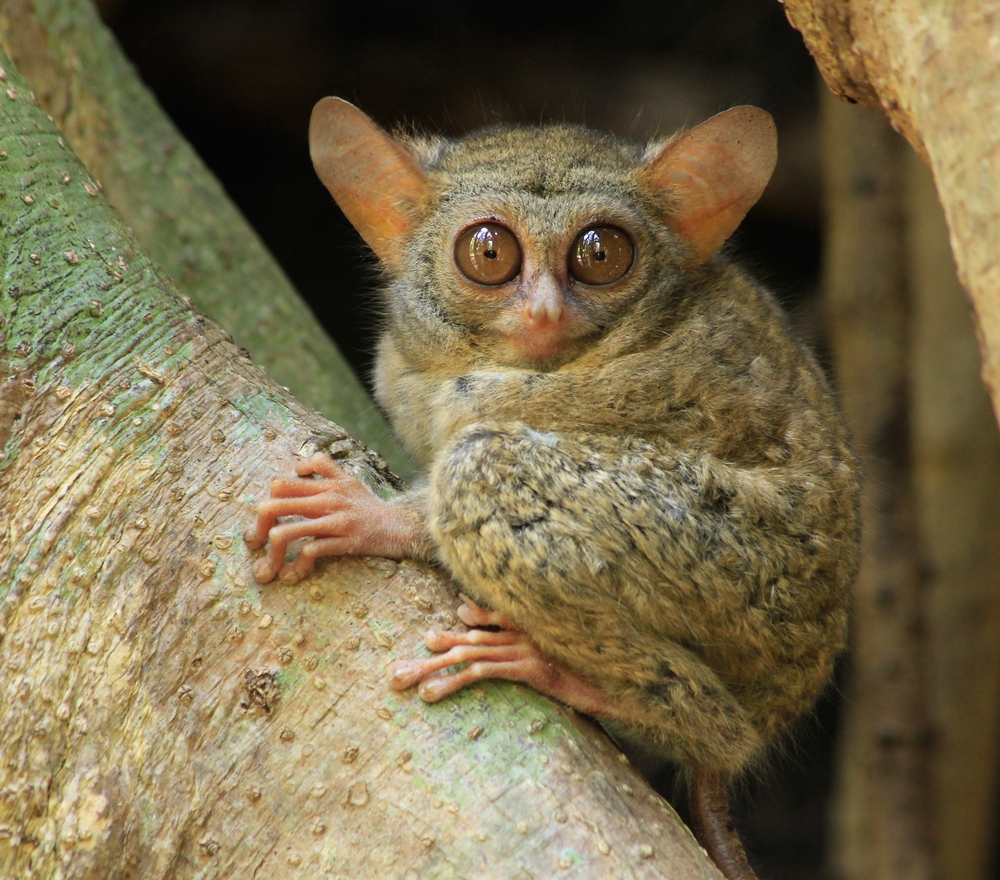
Tarsiers are tiny primates with some of the largest eyes relative to their body size in the animal kingdom. These saucer-sized eyes are perfect for their nocturnal lifestyle. Each eye is as large as their brain, allowing them to capture as much light as possible. This incredible night vision helps them hunt insects and small animals in the dark. It’s like having binoculars adapted for low-light conditions.
Their eyes are fixed in their sockets, so tarsiers rely on their flexible necks to look around, capable of rotating their heads nearly 180 degrees. This flexibility ensures they can spot prey and predators with ease. Despite their impressive night vision, tarsiers have limited color perception due to fewer types of color-detecting cells. They trade color vision for the ability to see in the dark, which suits their nocturnal habits. So when you see a tarsier’s enormous eyes, remember they are perfectly designed for life in the shadows.
